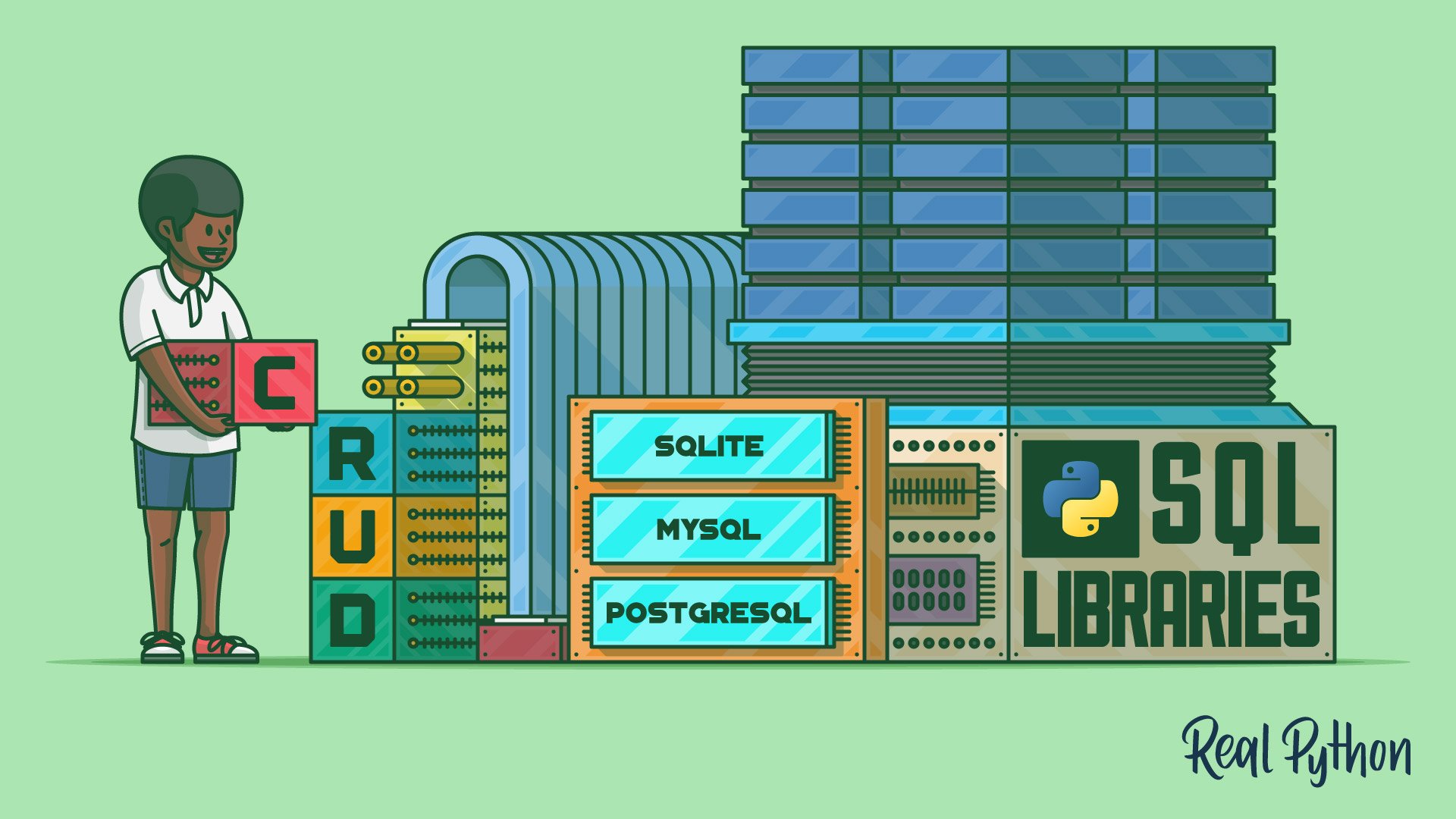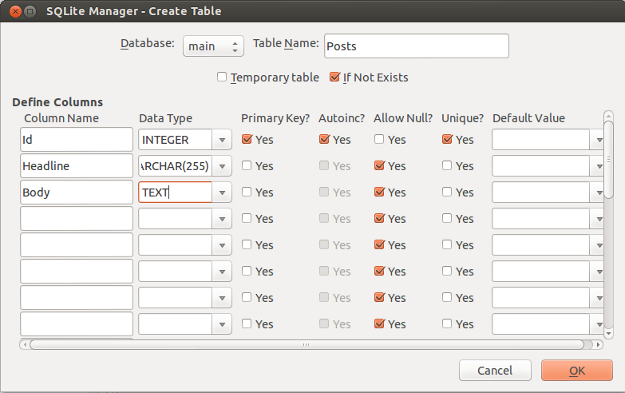

# Prepare a list of records to be inserted Yay, We have successfully inserted a record into the empty consumer’s table. The output will be:Įven if we want to insert new records in the table, we wish to The same can be taken care of using the Insert statement.Ĭur.execute("INSERT INTO consumers VALUES (1, 'John > Doe', ', 'A')")įor row in cur.execute('SELECT * FROM consumers'): This Python program will return only those records which match the conditional as per the where clause.
#Python sqlite database code
Let’s take an example to understand the same:Ĭur.execute('SELECT * FROM countries WHERE code = ?', code) Yes, we can certainly use the where clause to have this conditional in place. What if we want to retrieve only some specific records based on some conditional. Here we are iterating row by row using the for loop, so the output will look like this: Let us take an example of how it’s done.įor row in cur.execute('SELECT * FROM countries'): The output of the fetchall() function can be used in a different format to improve the readability of the returned records.

# Cursor is used as an object to call fetchall() function Let’s try the same with the fetchall() function # Results are printed using the print function # Cursor is used as an object to call fetchone() function Now, if you want to fetch the results of the Select * statement that you have just run above then, you can use either the fetchone() method to showcase only a single row or otherwise, fetchall() function to display all of the rows in the form of a python list. # Creating cursor object and namimg it as cur Pandas and sqlite3 can also be used to transfer between the CSV and SQL formats.Below are the examples mentioned: Example #1 Sqlite3 can be used with Pandas to read SQL data to the familiar Pandas DataFrame. Sqlite3 provides a SQL-like interface to read, query, and write SQL databases from Python. What are some of the reasons you might want to save the results of your queries back into theĭatabase? What are some of the reasons you might avoid doing this. Results to their own tables in the portal database. close () Challenge - Saving your workįor each of the challenges in the previous challenge block, modify your code to save the to_sql ( "surveys2002", con, if_exists = "replace" ) con. Surveys2002 = surveys_df # Write the new DataFrame to a new SQLite table read_sql_query ( "SELECT * from surveys", con ) # Select only data for 2002

connect ( "data/portal_mammals.sqlite" ) # Load the data into a DataFrame Import pandas as pd import sqlite3 con = sqlite3. Then select only those survey results for 2002, and then save it out to its own table so we can work Here, we run we re-do anĮxercise we did before with CSV files using our SQLite database. We can also us pandas to create new tables within an SQLite database. Storing data: Create new tables using Pandas Made for all years, and sum of observation weights for each site, ordered by How many records are returned?Ĭreate a dataframe that contains the total number of observations (count) Observations of sex “male” or “female” that includes observation’s genus and The difference in performanceīecomes more noticeable as the size of the dataset grows (see for example theseĬreate a query that contains survey data collected between 1998 - 2001 for Improvements when reading/writing compared to CSV. Storing your data in an SQLite database can provide substantial performance read_sql_query ( "SELECT * from surveys", con ) # Verify that result of SQL query is stored in the dataframe connect ( "data/portal_mammals.sqlite" ) df = pd. Import pandas as pd import sqlite3 # Read sqlite query results into a pandas DataFrameĬon = sqlite3. While the connection is open, any interactions with the database require you to A connection object is created using nnect() theĬonnection must be closed at the end of the session with the. The sqlite3 module provides a straightforward interface for interacting with In the following lesson, we’ll see some approaches that can be taken to do so. SQL is not only more efficient, but also it allows you to subset and import only Your computers memory to save that variable. When you open a CSV in python, and assign it to a variable name, you are using Use the sqlite3 module to interact with a SQL database.Īccess data stored in SQLite using Python.ĭescribe the difference in interacting with data stored as a CSV file versus in SQLite.ĭescribe the benefits of accessing data using a database compared to a CSV file.


 0 kommentar(er)
0 kommentar(er)
